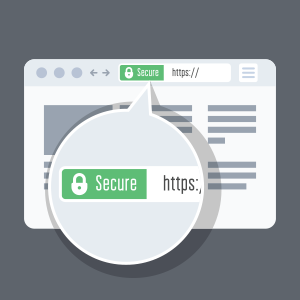What is an SSL Certificate?
Secure Sockets Layer or SSL is the standard technology used for keeping an internet connection secure and safeguarding any confidential/sensitive data that is being sent between two systems. It prevents criminals from reading and altering any data transferred, which also includes potential personal details like credit card numbers, financial information, addresses, and names. The two systems mentioned here can be server to server (for instance, an application with payroll information or with personal identifiable data) or a server and a client (for instance, a shopping browser and website). Thus, an SSL Certificate:
- Affirms your identity
- Protects data
- Enhances customer trust
- Helps you satisfy PCI/DSS requirements
- Improves search engine ranking

How to View SSL Certificate Details in Google Chrome?
An SSL certificate is installed on the server side and there are visual signs on the browser indicating to users that they are protected by SSL. The key element denoting that SSL is present on the site is the https:// ("s" standing for "secure") instead of just the http://. A secure connection could be indicated by the presence of a green address bar signal or a padlock icon.
Viewing Certificates
After opening the certificate component, click on the certificate you want to view to highlight it and then click the "View" button to see the certificate’s content. The dialog box contains the following details: dates the document is valid from, certificate's issuing party, encryption method, and serial number, and also states if the certificate is valid.
Google Chrome
If you are using Chrome:
- Click the "Customize and control Google Chrome" icon that has three lines or the wrench icon. Click "Options" or "Settings".
- Go to the link "Show advanced settings" or tab "Under the Hood".
- Go to the "Manage certificates" button to view SSL certificates.
- Click the certificate you want to view to highlight it.
- Go to the "View" button to see the certificate’s content.
How does an SSL Certificate Work?
The fundamental principle is that when you install an SSL certificate on your server and a browser gets connected to it, the very presence of the SSL certificate activates the SSL protocol, which will encrypt information transmitted between the server and the browser (or between two servers).
SSL directly operates on top of the transmission control protocol (TCP), efficiently working as a safety blanket. It permits higher protocol layers to remain unchanged while continuing to provide a secure connection. Hence, beneath the SSL layer, it is possible for the other protocol layers to function.
If an SSL certificate is used correctly on a regular basis, an attacker will only be able to see which IP and port are connected and roughly how much data is getting sent. They may succeed in terminating the connection, but both the user and server will be able to tell this has been done by a third party.
There could also be instances in which the hacker may succeed in figuring out which hostname the user is connected to but not the rest of the URL. The vital information remains secure as the connection is encrypted.
- SSL commences with its work after the TCP connection is established, beginning with what is known an SSL handshake.
- The server sends its certificate to the user together with several specifications (including which encryption methods to use and which version of SSL/TLS, etc.).
- The user checks the certificate’s validity and selects the highest level of encryption that can be supported by both parties and begins a secure session employing these methods. Several sets of methods are available with different strengths and these are called cipher suites.
- To ensure the authenticity and integrity of all messages transferred, TLS and SSL protocols also contain an authentication process employing message authentication codes (MAC).
Optimize Your Website for Security Trust with SSL Certificate and cWatch Web Security
Failing to have an SSL on your website will result in leaving a huge back door open for potential hackers to enter your website. SSL technology guarantees that the connection between the website and browser is encrypted, thus protecting visitors of your website and ensuring that you are safeguarding those potential customers. All the information shared between your website and your customers should be protected and treated to be confidential and this is where website security plays another important role for all your online activities and business.
This concluding part will explain what you really need in order to protect your website. This is where Comodo, a cybersecurity company, comes into effect by offering cWatch Web – a managed security service for websites and web applications. As a managed security service cWatch has the following benefits:
- Reduce risk
Leverage multiple cybersecurity solutions to fight against evolving threats while staying PCI and HIPPA compliant. - Save time
React faster to threats and recover quicker from attacks with expert help from security experts. - Save money
Receive all the benefits of an inhouse security operations center and professionals in an economically-friendly manner.
Comodo cWatch Web has a six-layer protection feature that provides exceptional security for your website and all the data contained in it. These six web security layers include:
- Malware Monitoring and Remediation
Detects malware, provides the methods and tools to remove it, and prevents future malware attacks - Cyber Security Operations Center (CSOC)
A team of always-on certified cybersecurity professionals providing round-the-clock surveillance and remediation services - Secure Content Delivery Network (CDN)
A global system of distributed servers to improve the performance of websites and web applications - Web Application Firewall (WAF)
Powerful, real-time edge protection for websites and web applications providing improved security, filtering, and intrusion protection - PCI Scanning
Enables service providers and merchants to stay in compliance with the Payment Card Industry Data Security Standard (PCI DSS). - Security Information and Event Management (SIEM)
Advanced intelligence that can leverage current events and data from 85M+ endpoints and 100M+ domains





